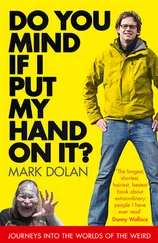Robert Monroe - Journeys out of the body, Practical Guidebook
Здесь есть возможность читать онлайн «Robert Monroe - Journeys out of the body, Practical Guidebook» весь текст электронной книги совершенно бесплатно (целиком полную версию без сокращений). В некоторых случаях можно слушать аудио, скачать через торрент в формате fb2 и присутствует краткое содержание. Жанр: Старинная литература, на английском языке. Описание произведения, (предисловие) а так же отзывы посетителей доступны на портале библиотеки ЛибКат.
- Название:Journeys out of the body, Practical Guidebook
- Автор:
- Жанр:
- Год:неизвестен
- ISBN:нет данных
- Рейтинг книги:5 / 5. Голосов: 1
-
Избранное:Добавить в избранное
- Отзывы:
-
Ваша оценка:
- 100
- 1
- 2
- 3
- 4
- 5
Journeys out of the body, Practical Guidebook: краткое содержание, описание и аннотация
Предлагаем к чтению аннотацию, описание, краткое содержание или предисловие (зависит от того, что написал сам автор книги «Journeys out of the body, Practical Guidebook»). Если вы не нашли необходимую информацию о книге — напишите в комментариях, мы постараемся отыскать её.
Journeys out of the body, Practical Guidebook — читать онлайн бесплатно полную книгу (весь текст) целиком
Ниже представлен текст книги, разбитый по страницам. Система сохранения места последней прочитанной страницы, позволяет с удобством читать онлайн бесплатно книгу «Journeys out of the body, Practical Guidebook», без необходимости каждый раз заново искать на чём Вы остановились. Поставьте закладку, и сможете в любой момент перейти на страницу, на которой закончили чтение.
Интервал:
Закладка:
With perfect knowledge of all the techniques for maintaining, a phase may last two to four minutes, which doesn’t sound like an extended duration, but really is. A particularity of the phase space is that achieving something and moving around in it takes a minimum amount of time, mere seconds. Thus, so much can be done during 3
minutes in the phase that one literally needs a list, so as not to waste any time.
There are theories that have neither been proven nor disproven claiming that time in the phase contracts and expands relative to real time. Thus, one minute of real time while in the phase may feel much longer in terms of phase time.
Perception of time varies from practitioner to practitioner. Novices especially perceive a real minute as more like five to 10 minutes in the phase. This is determined by the particularities of individual psychology, state of mind, and the type of events that occur in the phase.
In order to understand how long a phase really lasted, one does not need to try using a stopwatch in the real world. It is better to count how many actions took place in it and how much time each of them could have taken. The result will differ from one’s first rough estimate several times over.
The maximum duration the phase varies depends heavily on the ability to apply phase maintenance techniques. Some practitioners have difficulty breaking the two-minute barrier while some find it easy to remain in the phase for 10 minutes or longer. It is physically impossible to remain in the phase forever because even a 20-minute phase is unheard of.
TECHNIQUES AND RULES AGAINST
RETURNING TO THE BODY
Of the following techniques, constant sensory amplification and as-needed sensory amplification are applied the most often while performing phase maintenance. However, as opposed to other technical elements of phase exploration, other secondary techniques of maintaining often become mainstream and the most appropriate for certain individuals. Thus, all the techniques should be studied, but the first two should be considered very carefully.
Constant Sensory Amplification
The same sensory amplification described in the chapter on deepening (Chapter 6) also applies to “maintaining”. In essence, having achieved the necessary depth of phase, one should not stop to actively agitate his or her perception but should keep on doing this all the while, albeit not as actively as during deepening.
The idea is that during the entire duration of the phase, all action should be focused on experiencing the maximum possible amount of tactile-kinesthetic and visual perceptions. This entails constantly touching and examining everything in minute detail. For example, if passing by a bookcase, touch and examine some of the books in it, including their pages and corners. Tactile observation should be performed on every encountered object.
Palpation may be applied separately as a background sensation.
This is done in order not to overload the sense of sight. The hands should be touching something all the time, or better still, rubbing each other.
As-Needed Sensory Amplification
Applying the as-needed sensory amplification technique is no different than constant sensory amplification. It is used only when a foul (a return to a wakeful state) is imminent or when phase vision starts to blur and fade. For example, while traveling in the phase everything may start to blur, signaling a weakening of the phase. At this moment, the practitioner should touch every available object; observe everything in fine detail. As soon as returns to a clear and realistic state, actions may be continued without needing to perform amplification.
Constant Vibration
This technique is used to maintain constant, strong vibrations in the phase. As previously noted, vibrations are generated by straining the brain or tensing the body without using muscles. Maintaining strong vibrations will have a positive effect on the length of the phase.
Strengthening Vibrations as Needed
In this case, vibrations are created and strengthened only if signs of a foul become apparent. Examples of foul indicators include duality of perception or blurred vision. Strengthening vibrations will help to deepen the phase, allowing a practitioner to stay and continue within the phase.
Diving Headfirst
This technique is the same as the deepening technique of the same name. If a phase is about to dissolve, diving headfirst with the eyes shut and a desire to dive as quickly and deeply as possible. As soon as phase depth returns, translocation techniques may be used to keep from arriving at a dead end.
Forced Falling Asleep
As soon as indicators of a foul appear, immediately lie down on the floor and attempt forced falling asleep; the same as the phase entry technique. After successfully performing the technique (3-10sec.) , a practitioner may get up and continue to travel through the phase since the perception of reality and its depth will most likely be restored. Resist actually fall asleep.
Rotation
If indicators of a foul appear, the practitioner should start rotating around the head-to-feet axis. Unlike the phase entry technique of the same name, the movement does not have to be imagined. This is an absolutely real rotation in the phase. After several revolutions, depth will be restored and actions may be continued. If indicators of a foul persist, rotation should continue until proper depth is achieved.
Counting
During the entire phase, count to as large a number possible - not just for the sake of counting, but with a strong desire to reach the highest number possible. Counting may be performed silently or out loud.
This technique works by creating a strong determination to remain in the phase by providing a goal that requires action in the phase.
Listening in
If there are any background sounds similar to those heard while entering the phase - rumbling, whistling, ringing, buzzing, or sizzling
– these sounds may be used to prolong duration of the phase by aggressive attempts at listening in, hearing the entire range of internal sounds. The forced listening in technique may also be used for phase maintenance.
Hooking onto the phase
Another interesting method of “maintaining” is hooking onto the phase. In the event of an impending foul, grab onto an object in the phase actively palpate or squeeze it. Even if a return to the body occurs during this technique, the hands will continue to hold the phase object and the physical hands will not be perceived. Beginning with these phantom feelings in the hands, separation from the body is possible. Any nearby object may be hooked: the leg of a chair, a drinking glass, a doorknob, a stone, or a stick. If there is nothing to grab hold of, clasp the hands together or bite down on a lip or the tongue.
Two rules apply to using the techniques that help to resist a phase exit. First of all, never think that the phase might end and result in a return to the body; thoughts like this are like programming that immediately send the practitioner to a wakened physical state.
Secondly, do not think about the physical body. Doing will also instantly return the practitioner to the body, every time.
TECHNIQUES AND RULES
FOR RESISTING FALLING ASLEEP
Constant Understanding of the Possibility of Falling AsleepMost of the time, falling asleep while in the phase can be overcome by a constant awareness that sleep is possible and detrimental to a continued phase. A practitioner must always consider the probability of falling asleep and actions must be carefully analyzed to ensure that they are based on real desires and not on paradoxical notions, which are common to dreams.
Читать дальшеИнтервал:
Закладка:
Похожие книги на «Journeys out of the body, Practical Guidebook»
Представляем Вашему вниманию похожие книги на «Journeys out of the body, Practical Guidebook» списком для выбора. Мы отобрали схожую по названию и смыслу литературу в надежде предоставить читателям больше вариантов отыскать новые, интересные, ещё непрочитанные произведения.
Обсуждение, отзывы о книге «Journeys out of the body, Practical Guidebook» и просто собственные мнения читателей. Оставьте ваши комментарии, напишите, что Вы думаете о произведении, его смысле или главных героях. Укажите что конкретно понравилось, а что нет, и почему Вы так считаете.










